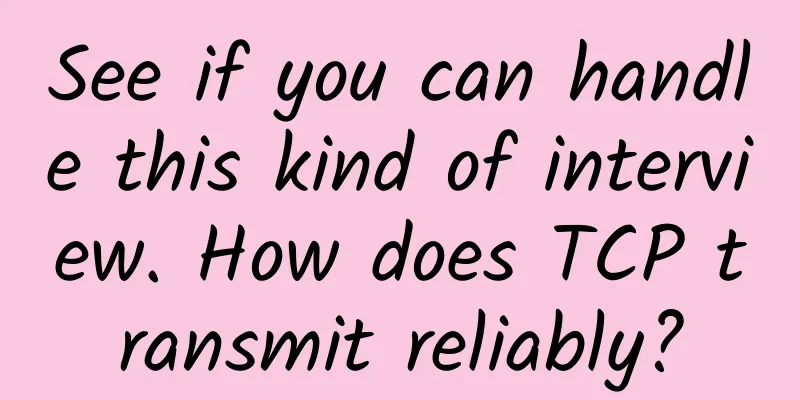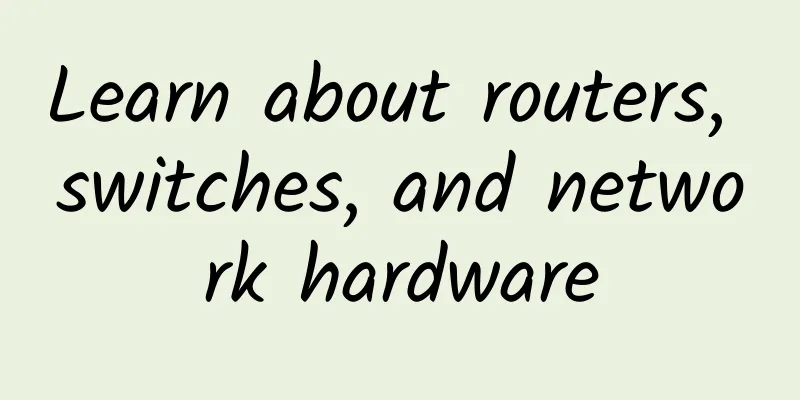See if you can handle this kind of interview. How does TCP transmit reliably?

PrefaceHello everyone, I am Amazing. It is the golden September and October again, and it is the interview season again. Are you guys who are working ready to look for opportunities? Or are you planning to wait and see what will happen next year? But no matter how hard you try, you should not give up studying, especially the eight-legged essay. This time, I bring you an interview article about how TCP can transmit reliably. I will take you to explore from the most superficial interview answers to the fancy questions about this knowledge. picture TCP (Transmission Control Protocol) ensures the reliability of data transmission through multiple mechanisms, including connection management, checksum, sequence number, confirmation response, timeout retransmission, flow control and congestion control.
Through these mechanisms, TCP can ensure the reliability of data transmission, prevent data loss, duplication and misordering, and adapt to changes in network conditions to improve transmission efficiency. What is the specific process of TCP three-way handshake and four-way wave?TCP three-way handshake processThe TCP three-way handshake is the process of establishing a TCP connection, which requires the client and server to send a total of three messages.
TCP four-wave processTCP four-wave handshake is the process of closing a TCP connection, which requires the client and server to send a total of four messages.
What else can I ask?How does the TCP checksum mechanism detect and handle data corruption or errors?The TCP checksum mechanism detects data corruption or errors by calculating and verifying the checksum in the data packet. Specifically, the TCP checksum is an end-to-end checksum that is calculated by the sender and added to the header of the data packet. After receiving the data packet, the receiver recalculates the checksum and compares it with the sender's checksum. If the checksums do not match, the receiver will assume that an error has occurred in the transmission of the packet and discard the packet. In addition, the TCP checksum is not only used to detect the integrity of the data packet, but also to detect whether any changes have occurred to the TCP header and data during transmission. If data corruption is detected, TCP will handle the error through a timeout retransmission mechanism, that is, if no confirmation response is received within a certain period of time, the sender will resend the data packet. This mechanism ensures reliable data transmission. How does the TCP sliding window mechanism work and how does it affect the data transfer rate?The TCP sliding window mechanism is a key mechanism in the TCP protocol for controlling the data transmission rate and ensuring the reliability of data transmission. How it worksThe sliding window mechanism allows the sender to continue sending multiple packets while waiting for an acknowledgment from the receiver. The window size refers to the maximum number of packets that the sender can send without waiting for an acknowledgment. For example, if the window size is 3, the sender can send three packets in a row without waiting for an acknowledgment of the previous packet. Each TCP/IP host supports two sliding windows: one for receiving data and one for sending data. The sizes of the send window and receive window can be adjusted dynamically to adapt to network conditions and the host's buffer capacity. The send window size is dynamically adjusted by the sender based on the receiver's confirmation information. If the receiver confirms a packet, the sender can continue to send the next packet until the send window size reaches its maximum value. The receive window size is dynamically adjusted by the receiver based on the capacity of its buffer to prevent buffer overflow. Affects data transfer rateThe sliding window mechanism allows the sender to continue to send multiple data packets while waiting for confirmation, thereby reducing the waiting time for confirmation and improving the efficiency of data transmission. For example, if only one data packet can be sent at a time, it needs to wait for the receiver's confirmation, which will greatly affect the transmission rate. The sliding window mechanism implements flow control by dynamically adjusting the window size to prevent the sender from sending data too quickly, causing the receiver's buffer to overflow. This mechanism ensures the smoothness and reliability of data transmission. The sliding window mechanism is also combined with TCP's congestion control mechanism to avoid network congestion by adjusting the window size. When network congestion is detected, the sender will reduce the window size and slow down the data transmission rate to reduce the network load. Final ConclusionThe TCP sliding window mechanism achieves efficient data transmission and flow control by dynamically adjusting the size of the send window and the receive window. Its working principle includes the concept of sliding window, window maintenance and dynamic adjustment. This mechanism not only improves the efficiency of data transmission, but also ensures the reliability and stability of data transmission. Slow start, congestion avoidance, fast retransmit and fast recovery mechanismsThe slow start, congestion avoidance, fast retransmit and fast recovery mechanisms in TCP congestion control work together to ensure the stability and fairness of the network and achieve efficient data transmission.
How does TCP detect packet loss and ensure data integrity through a timeout retransmission mechanism?The TCP protocol detects packet loss and ensures data integrity through a timeout retransmission mechanism. Specifically, after sending a data packet, the TCP protocol starts a timer to wait for the receiver's confirmation (ACK). If no ACK is received within the specified time, the sender will trigger the timeout retransmission mechanism and resend the data packet. This mechanism is implemented through a timer. When the timer expires, the sender will send the data packet again. In addition, TCP detects packet loss by the number of consecutive duplicate acknowledgment packets (Dup-ACK) from the receiver. When the sender receives more than three duplicate ACKs, it realizes that the packet is lost and resends the packet. This mechanism ensures that data packets can be transmitted correctly even in the event of network congestion or packet loss. TCP's timeout retransmission mechanism not only detects packet loss, but also optimizes network performance through congestion control. When packet loss is detected, TCP resets the congestion window (cwnd) to 1 and sets the slow start threshold (ssthresh) to half the current congestion window size. This mechanism helps prevent network congestion and ensures the reliability of data transmission. |
Recommend
Ten areas you must know about 5G
The development of 5G is in full swing, and it ca...
Changing the quality of cultural experience with 5G
Museums are vital centers of culture, education, ...
The impact of 5G technology on these 20 industries
5G, a new era product developed in response to th...
Huawei's Intelligent IP Network Solution Creates a Simplified 5G Bearer Network
At the HAS Analyst Conference recently, Chen Jinz...
Popular understanding of the seven-layer network protocol
[[256704]] The seven layers of OSI are briefly in...
The future of work: In a hybrid world, office space cuts are coming
[[440952]] As the pandemic continues to spread, m...
Cisco Launches AppDynamics Cloud to Build Superior Digital Experiences
summary Cisco launches AppDynamics Cloud, a cloud...
IPv6 series - 10 common problems for beginners
Based on the problems encountered by myself and m...
Exclusive reveal! How 5G can help secure large-scale events
The wonderful opening ceremony of the 2022 Beijin...
Interesting, 5G base station and fire hydrant logo combined
Following the integration of 5G base stations wit...
TmhHost special package 4G memory 388 yuan/year, Los Angeles CN2 GIA/AS9929/Japan Softbank optional
TmhHost currently offers several special annual p...
MIIT releases 5G spectrum planning, China launches mid-band 5G commercialization
On November 15, the Ministry of Industry and Info...
An article to understand the principles of CDN technology
Overview The rapid development of the Internet ha...
Learn about three of the four types of switch messages in one minute: broadcast, multicast, and unknown unicast
With the development of the Internet, various app...
How do terminals in a LAN access the external network? The answer is at the end
[[357957]] 0. Fans Questions Fans asked: "Ho...









